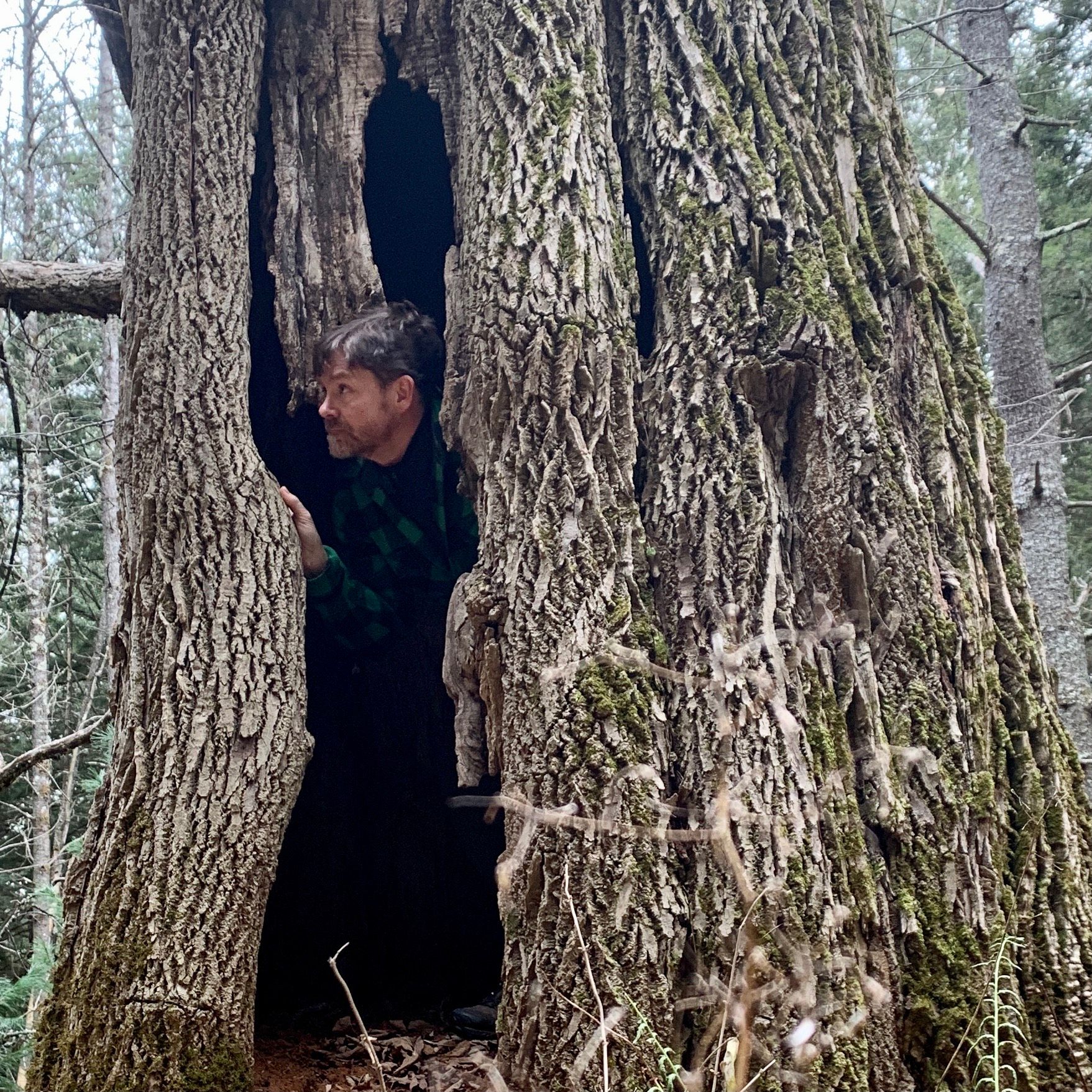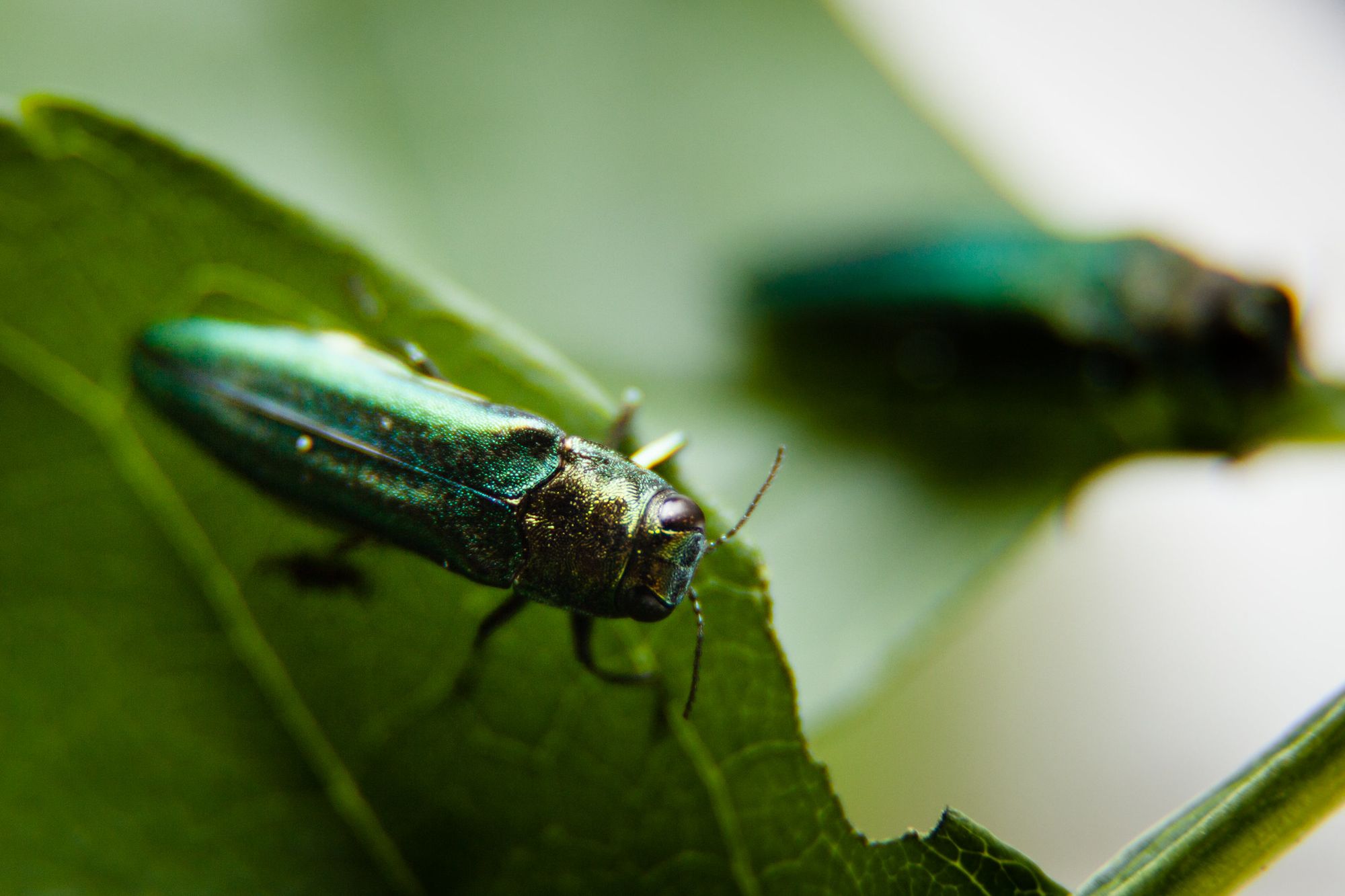Emerald ash borer is coming to Thetford. Does the Town need a plan?
The Town Manager's proposed budget cuts the contribution to the Town Tree Fund by 50%, leaving enough money for the removal of one, maybe two, trees.

The arrival of the emerald ash borer, a non-native, invasive beetle, is a catastrophe for Vermont’s forests. Like the chestnut blight that put an end to the American chestnut, so highly valued for its nuts and durable timber, and Dutch elm disease that altered our landscape by killing the elms, the ash borer is poised to eliminate yet another of our premium hardwood trees. The recent report that the beetle has been confirmed in Hartford VT, means that it is only a matter of time before trees in Thetford are attacked. In fact the Town Tree Warden warned a couple of years ago that it was only 2-3 years before the pest arrived here.
Consequently the Town deposited $7,500 in the Town Tree Fund in 2019 and $10,000 in both 2020 and 2021 to provide money for when it came time to pay contractors to remove dying ash trees in the Town right-of-way. The proposed 2022 budget cuts this contribution to $5,000.
It may appear that the fund is well padded, however removing trees, especially along roads where there are utility lines, is not cheap. Depending on the diameter of the tree it can cost as much as $3,500 per tree - roughly - for a licensed, insured professional to do the job. It is likely that there are hundreds of ash trees beside the 85 miles of public roads in Thetford.
Across Vermont, towns are being asked to draft and fund ash tree management plans. Regional Planning Commissions are assisting with this, including an inventory of roadside ash trees. There are three options on how to address the likely death of these trees. The pre-emptive approach is to cut trees prior to signs of infestation, a planned approach that allows the cost to be spread across a more predictable timeline. The second option is selective management. In tandem with planned tree removal, insecticides are used to protect exceptionally scenic ash trees, though there is little data on long-term effectiveness and it requires frequent monitoring. The third option is reactive management. Dying trees in the right-of-way are removed when they are noticed. If many trees are affected simultaneously this could incur high unanticipated costs.
The transport of firewood has played a significant role in the spread of the ash borer. The Montpelier publication The Bridge reported in 2014 that 80% of new ash borer infestations occurred in or around campgrounds because of firewood brought from another state. As a result Vermont banned the importation of firewood. This may have slowed, but has not stopped, the arrival of the ash borer.
Its presence will have long-term repercussions, since ash trees comprise about 5 percent of our forests - one in twenty trees. They are the dominant tree in the rich northern hardwood forest. Ash are important for timber production. They grow fast and straight, inducing other trees to do likewise in the relentless competition for sunlight. This can improve the overall quality of a timber stand. Ecologically about 280 species of native insects and spiders feed directly or indirectly on ash trees. In turn, these creatures nourish insect-eating songbirds and their young.
There are two native ash species. White ash is most common and easily recognized by its bark, a neat series of ridges criss-crossing in a diamond pattern. Black ash, also known as brown ash or green ash, is restricted to wetter areas. Both have compound leaves - a main leaf stem sprouting 2-4 pairs of leaves in white ash and 3-5 pairs in black ask, plus a terminal leaf. White ash is a well-loved shade tree and its springy wood has good working properties and is of great utility. It is the wood of choice for baseball bats and tool handles. Black ash is the source of the delicate wood strips used traditionally by indigenous peoples for weaving beautiful and durable baskets.

The dirty work of the ash borer is done by its larvae. While adult beetles chew notch-shaped cuts out of the edges of ash leaves, the larvae feast on the cambium layer beneath the bark that transports water and nutrients throughout the tree. Any part of a tree can be infested, from the trunk to branches as small as 2 cm in diameter. A tree can be infested by hundreds or even thousands of larvae. The net result is to cut off nutrients, killing the tree.
Unfortunately, by the time a tree looks sick, the infestation may be advanced. Symptoms are not easy to detect, nor are they specific to ash borer damage, but landowners may look for signs such as bark deformities. The chewing larvae make winding tunnels or galleries and the overlying bark often develops vertical splits or cracks. This may be accompanied by dryness and a pinkish-brown color in the thin bark of young trees. Peeling off the bark will reveal the galleries of the larvae, winding back and forth in S-curves
Woodpeckers may be attracted to feed on the larvae. Signs of this are patches of missing bark surrounding a hole where they homed in on a larva. Another type of hole to look for is the exit hole that is made once a larva has undergone metamorphosis into an adult beetle. The holes are D-shaped and quite small, no more than 3.5 to 4 mm wide. The adult beetle is metallic green and only 3 to 3.5 mm wide and 7-8 mm (half an inch) long.

As the tree struggles its foliage becomes yellow, and its crown thins, showing dead branches. It may start growing “water sprouts” - new leafy shoots growing from the trunk, or even the roots, as the tree tries to compensate for its losses. Another response is abnormally heavy seed production, though most of the seeds are not viable.
The reaction of some landowners is to start cutting down ash trees. However the VT Forests, Parks & Recreation Department does not recommend such fast action. They advise that there are many variables to consider, and if landowners are enrolled in Current Use they should work with their consulting forester to address how this affects their management plan. Changes need the approval of the County Forester. Disposing of suspect ash wood is another concern.
A Canadian research study in 2018 reported that some white ash survive in spite of being infested.
In terms of halting the spread, it has been shown repeatedly in other states that cutting ash trees within a 1.5 mile radius of an infestation does not slow dispersal of the pest. The natural spread of the pest is 1-2 miles per year, though humans moving wood have greatly accelerated this.
We do not need the approval of the County Forester to remove dying trees beside a road that pose a danger to the public. But their removal does cost money. The Town could find itself liable if a known hazaradous tree, left unaddressed, causes property damage or personal injury. More likely, ailing trees could come down in large numbers during a storm, slowing emergency responders and storm cleanup.
While $5,000 in the proposed Town budget might cover one, maybe two, tree removals, the Town will likely need to remove dozens over the coming years.
Title map adapted from VT ANR ARC GIS.
